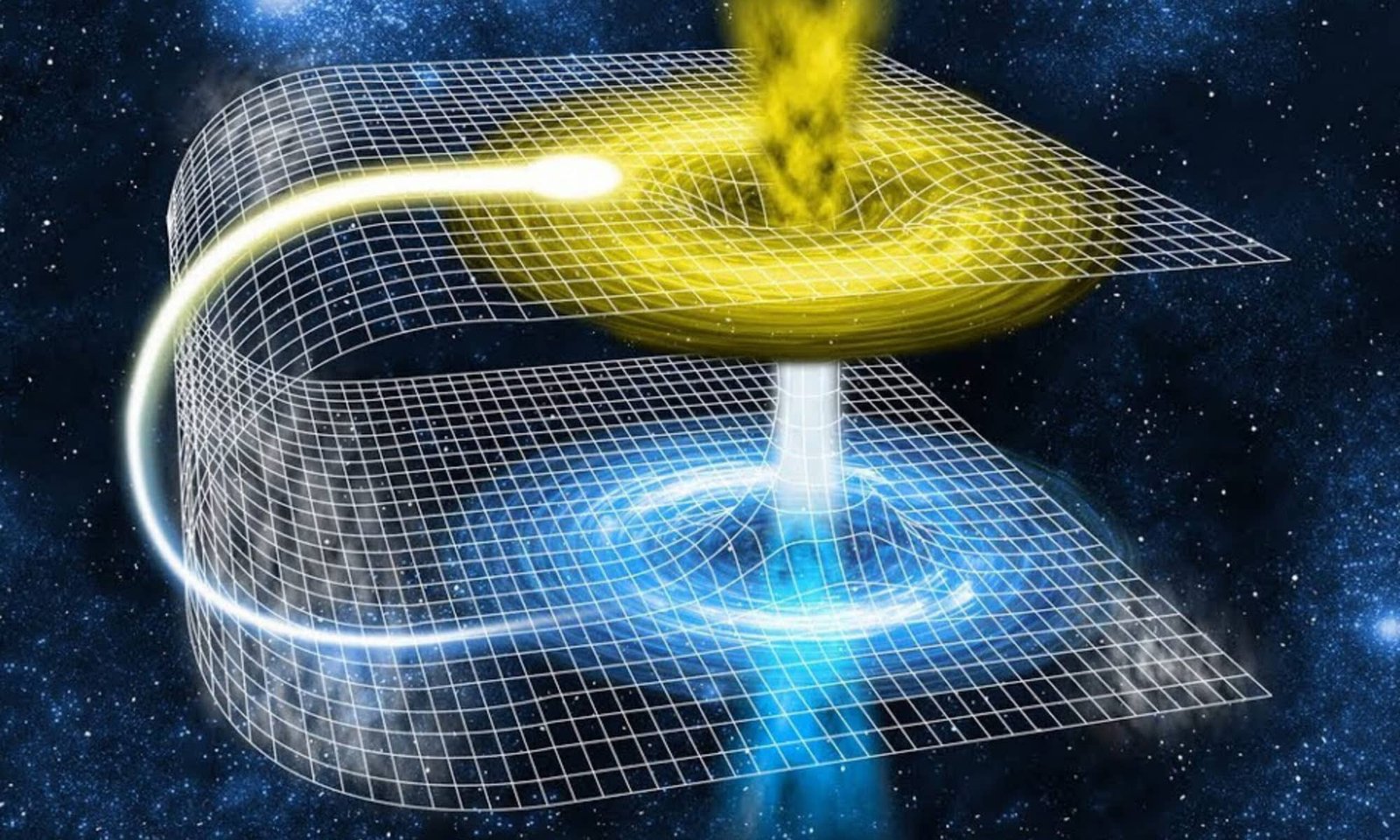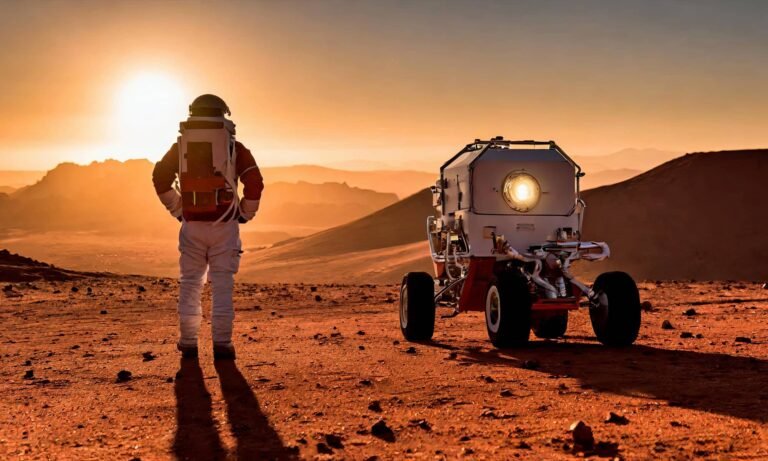Wormholes are fascinating theoretical structures that arise from the framework of general relativity, a cornerstone of modern physics developed by Albert Einstein. They are often described as “shortcuts” through spacetime, connecting distant regions of the universe in ways that challenge our conventional understanding of distance and travel. Within the context of general relativity, spacetime is a four-dimensional continuum, where the geometric properties of space and time intertwine. This relationship is crucial to comprehending how wormholes might theoretically exist.
The concept of a wormhole is deeply rooted in Einstein’s equations, which describe how mass and energy interact with spacetime. The simplest form of a wormhole is the Einstein-Rosen bridge, a solution to these equations that suggests the possibility of a tunnel connecting two separate points in spacetime. This bridge has sparked considerable interest, as it implies that if traversable, such tunnels could allow for instant travel between vast distances, potentially even across different timelines.
To comprehend the existence of wormholes, one must also consider negative energy and exotic matter – unique substances theorized to have properties that counteract the gravitational forces that would otherwise cause a wormhole to collapse. Theoretical physicists have proposed various models that suggest how these conditions might be met, leading to the stabilization of a traversable wormhole. Despite the allure of these cosmic constructs, it is important to note that no experimental evidence currently supports their existence, leaving wormholes as an intriguing yet speculative aspect of modern theoretical physics.
In conclusion, the study of wormholes encompasses a complex interplay of general relativity, spacetime geometry, and speculative physics. Understanding their theoretical foundations is pivotal for delving deeper into the potential implications and mysteries that wormholes present in our quest to understand the universe, including their possible role in interstellar travel, quantum mechanics, time dilation, gravitational anomalies, and the fundamental nature of reality itself.
Types of Wormholes: Navigating the Cosmic Passageways
Wormholes are theoretical passages through space-time that could create shortcuts for long journeys across the universe. Scientists have proposed various types of wormholes, each with its unique characteristics, potential applications, and associated challenges. This exploration of wormhole types offers insight into the diversity of thought within the scientific community regarding their nature and implications.
- The first type is the traversable wormhole, which is a solution to the Einstein field equations that permits safe passage for matter. Traversable wormholes are conceptualized as tunnels connecting two separate points in space-time, allowing for interstellar travel without the extreme forces present in a black hole. These wormholes, often depicted in science fiction, rely on the existence of exotic matter to remain open, thus preventing collapse and making them theoretically navigable for astronauts. However, the requirement for exotic matter poses significant challenges in terms of feasibility and detection.
- The second type is the Schwarzschild wormhole, also known as an Einstein-Rosen bridge. This wormhole connects two black holes, effectively creating a bridge between them. While they provide intriguing insights into the nature of black holes and their relationships, they are not traversable. The presence of singularities at both ends of the Schwarzschild wormhole makes them inhospitable to travelers, potentially resulting in extreme gravitational forces that would be lethal to any matter entering.
- Lastly, Lorentzian wormholes offer a more stable configuration than the previous types. These wormholes allow for time travel and have been mathematically derived from general relativity. Unlike their Schwarzschild counterparts, Lorentzian wormholes can be traversed in a limited manner, making them a fascinating concept in theoretical discussions on time travel. However, like traversable wormholes, they also necessitate the existence of exotic matter, raising similar challenges regarding practical application.
Each of these wormhole types contributes valuable insight into the ongoing exploration of space-time and the potential for interstellar travel, illuminating the challenges faced by scientists as they seek to unravel the mysteries that doorways in the universe may hold.
The Physics of Traversing Wormholes: Possibilities and Paradoxes
Wormholes, theoretical passages through space-time, have captivated the imagination of both scientists and the general public alike. Their potential for facilitating travel across immense cosmic distances positions them as a compelling subject of study in modern physics. The fundamental concept behind wormholes is rooted in Einstein’s general theory of relativity, which predicts the existence of these shortcuts through the fabric of space-time. The intriguing premise suggests that a traveler could enter one end of a wormhole and emerge instantaneously at another point in the universe, radically redefining our understanding of distance and travel.
However, entering and exiting a wormhole presents monumental challenges. For instance, the notion of stability becomes paramount; many physicists theorize that a traversable wormhole would require an exotic form of matter with negative energy density to prevent its implosion. This exotic matter, which remains hypothetical, adds a layer of complexity to the already intricate mechanics of wormhole travel. With current technological limitations, harnessing or creating such matter is far beyond our reach. Furthermore, the potential dangers associated with navigating through a wormhole pose serious risks, including radiation exposure and unpredictable gravitational forces.
The implications for time travel also garner significant attention, as traversing a wormhole could theoretically allow for journeys into the past. This notion introduces paradoxes, most notably the grandfather paradox, which questions the consequences of altering past events. If a traveler were to change a significant occurrence in their history, would their existence be erased, or would they create an alternate timeline? Such complexities illustrate the philosophical and scientific dilemmas inherent in the study of wormholes.
Despite these uncertainties, the allure of wormhole travel persists as a tantalizing concept that challenges our understanding of space, time, and the fundamental principles of physics. As research advances, the exploration of these cosmic phenomena unveils a myriad of possibilities, inviting further inquiry and contemplation into the nature of the universe itself.
Wormholes in Popular Culture: Bridging Science and Fiction
Wormholes have undeniably captured the imagination of creators across various mediums, serving as a bridge between the realms of scientific inquiry and artistic expression. From literature to cinema and television, these theoretical passages through space and time have sparked curiosity and intrigue, often prompting audiences to question the very nature of reality and the universe itself. Notably, popular science fiction films such as “Interstellar” and “Event Horizon” have attempted to depict wormholes with a degree of scientific accuracy, relying on the foundational theories of physicists like Albert Einstein and Nathan Rosen. “Interstellar,” for example, employs both theoretical and visual representations of a wormhole, showcasing a fascinating blend of artistry and astrophysics.
In literature, authors like Carl Sagan and Frank Herbert have explored the concept of wormholes, weaving them into narratives that challenge our understanding of time, space, and human existence. Sagan’s “Contact” introduces a fictional wormhole that offers an interstellar travel solution, intertwining scientific rigor with themes of exploration and the quest for knowledge. Meanwhile, Herbert’s “Dune” series delves into space-time distortions, influencing the science fiction genre while simultaneously encouraging readers to ponder the implications of advanced technology and its effect on society.
Television series, particularly those within the science fiction genre, have also embraced wormholes as central plot devices. Shows like “Star Trek” and “Stargate SG-1” have elegantly incorporated these phenomena into their narratives, often using them to facilitate exploration of new worlds and cultures. Such portrayals not only entertain but also serve to cultivate public interest in astrophysics and the enigmatic aspects of the cosmos. As these forms of media continue to evolve, the representation of wormholes remains a testament to their ability to inspire wonder and fuel scientific discourse, encouraging audiences to delve deeper into the mysteries of space and time.
What’s More

My Blog ( 112 )
Dependence (10) Fiction (10) Karma (9) Landmarks (10) Paramount (9) Spectrum (9) Spotlight (10) Take Off (9) Terra Shapes (9) Trepidation (9) Unique (9) Virtue (9)
Amazing Stuff (9) Beyond Known (10) Controversial (9) Digital World (10) Inequities (10) Innovative (9) Metaphysics (9) Orbiting Entities (10) Our Society (10) Outer Space (9) Value Creation (10) Yearnings (10)

My Interests ( 115 )
Site Forum
Curious to dive deeper and ready to share your thoughts on this? Join the conversation and be part of the FORUM@ericroth.org Your online discussion board providing space for engaging exchanges on specific topics and shared interests across this website.









